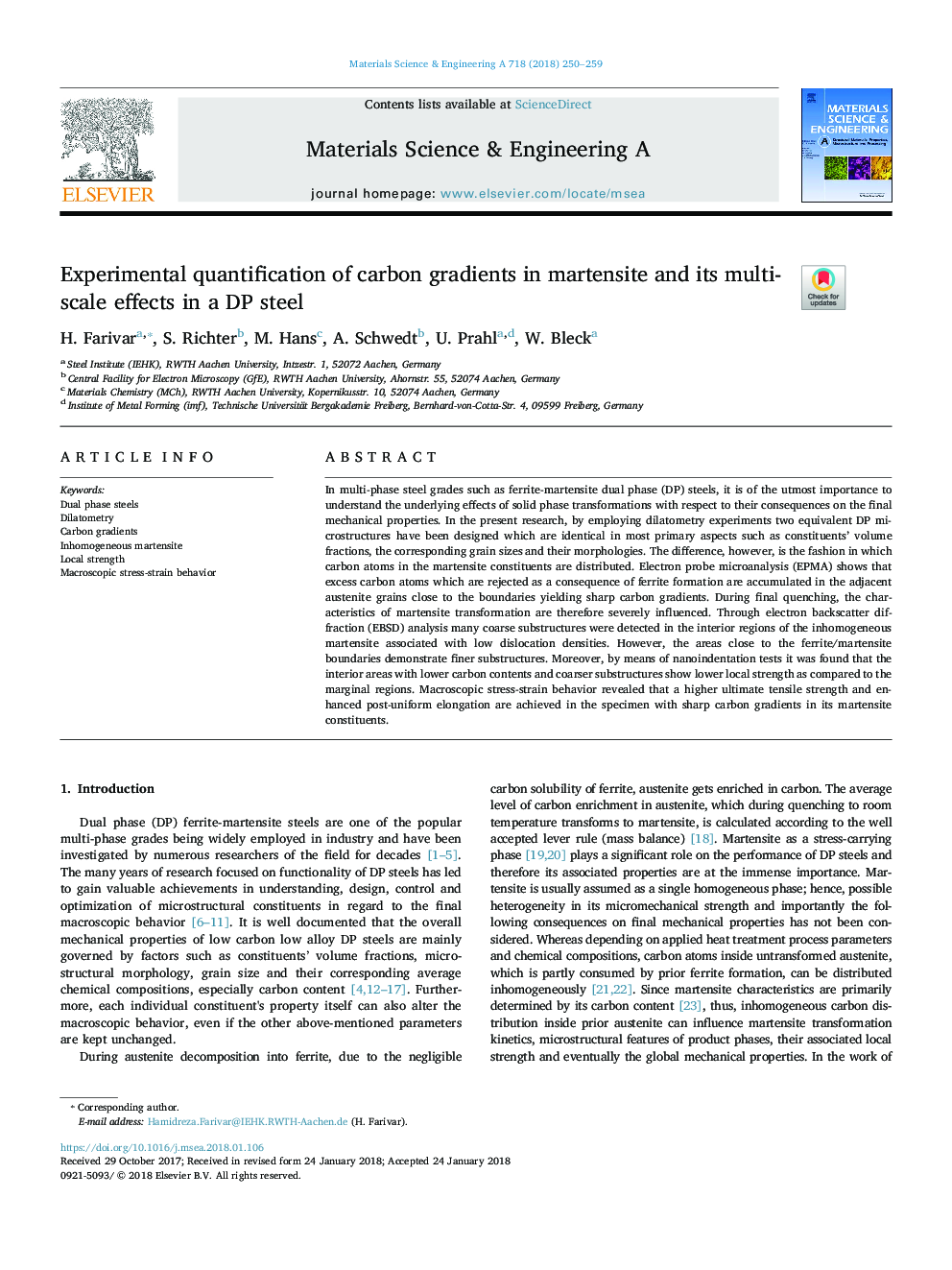| Article ID | Journal | Published Year | Pages | File Type |
|---|---|---|---|---|
| 7973218 | Materials Science and Engineering: A | 2018 | 10 Pages |
Abstract
In multi-phase steel grades such as ferrite-martensite dual phase (DP) steels, it is of the utmost importance to understand the underlying effects of solid phase transformations with respect to their consequences on the final mechanical properties. In the present research, by employing dilatometry experiments two equivalent DP microstructures have been designed which are identical in most primary aspects such as constituents' volume fractions, the corresponding grain sizes and their morphologies. The difference, however, is the fashion in which carbon atoms in the martensite constituents are distributed. Electron probe microanalysis (EPMA) shows that excess carbon atoms which are rejected as a consequence of ferrite formation are accumulated in the adjacent austenite grains close to the boundaries yielding sharp carbon gradients. During final quenching, the characteristics of martensite transformation are therefore severely influenced. Through electron backscatter diffraction (EBSD) analysis many coarse substructures were detected in the interior regions of the inhomogeneous martensite associated with low dislocation densities. However, the areas close to the ferrite/martensite boundaries demonstrate finer substructures. Moreover, by means of nanoindentation tests it was found that the interior areas with lower carbon contents and coarser substructures show lower local strength as compared to the marginal regions. Macroscopic stress-strain behavior revealed that a higher ultimate tensile strength and enhanced post-uniform elongation are achieved in the specimen with sharp carbon gradients in its martensite constituents.
Related Topics
Physical Sciences and Engineering
Materials Science
Materials Science (General)
Authors
H. Farivar, S. Richter, M. Hans, A. Schwedt, U. Prahl, W. Bleck,
